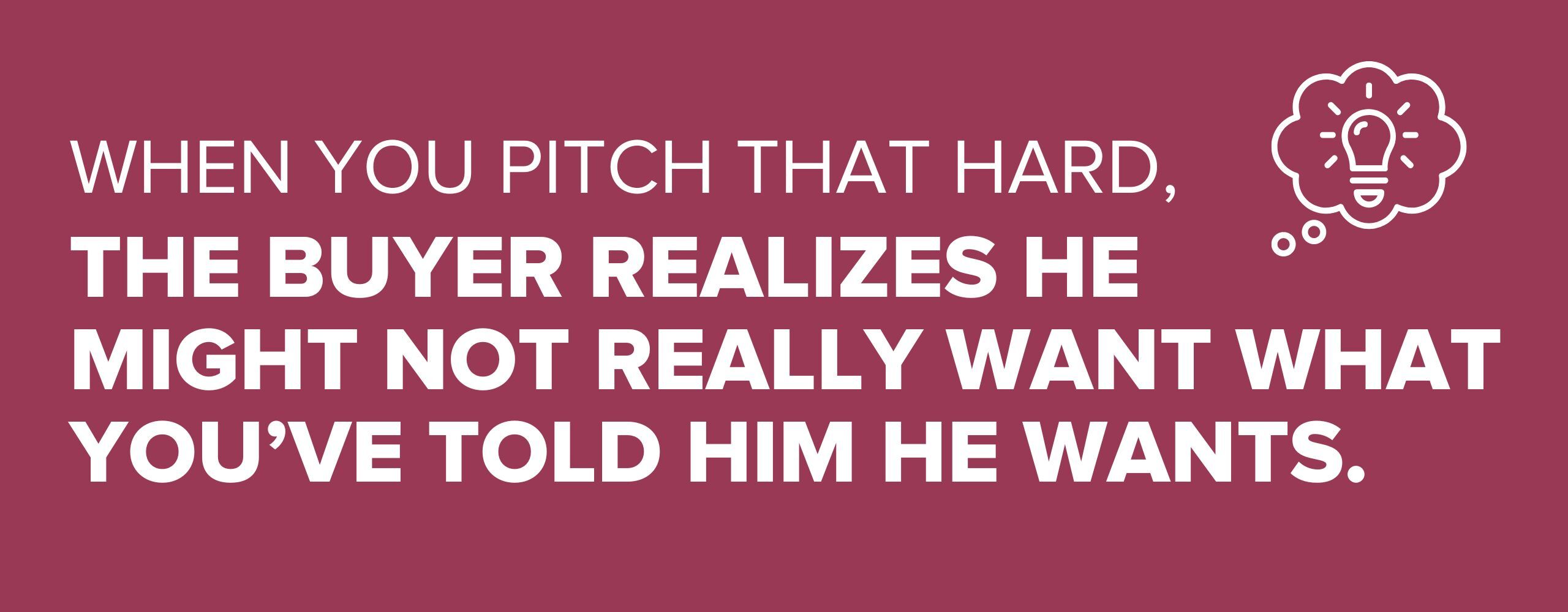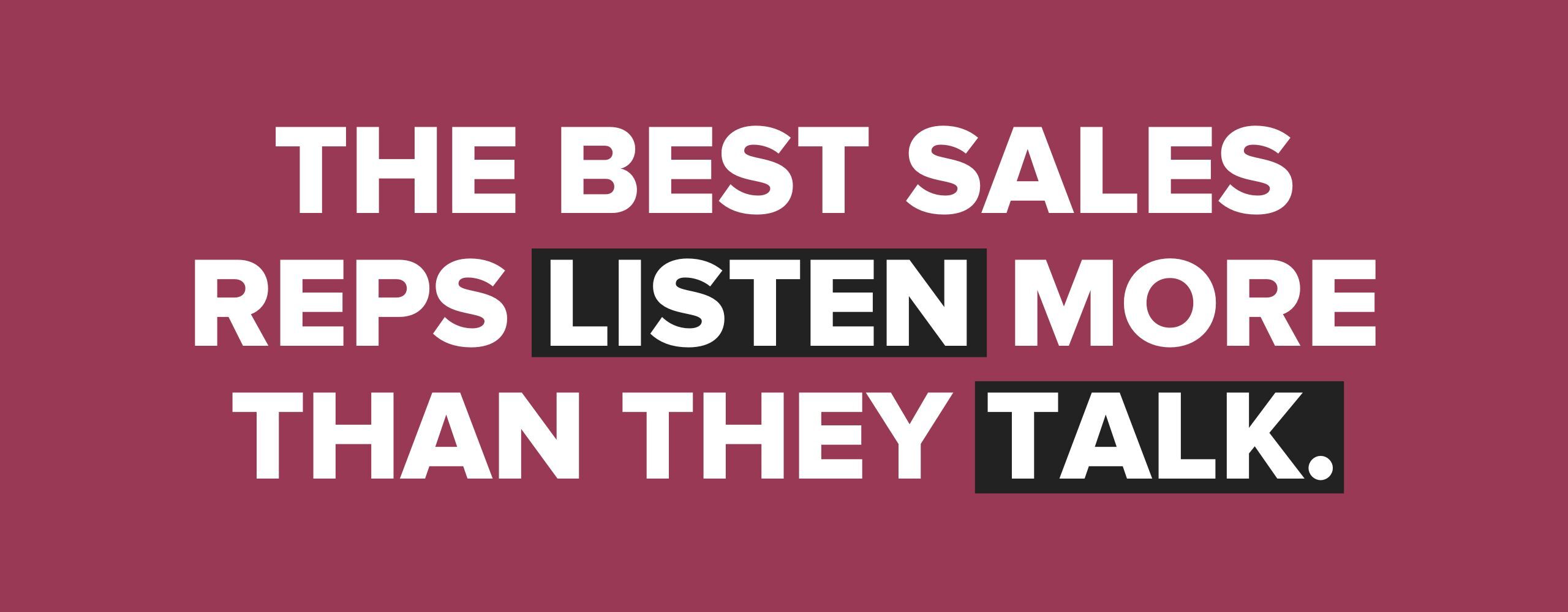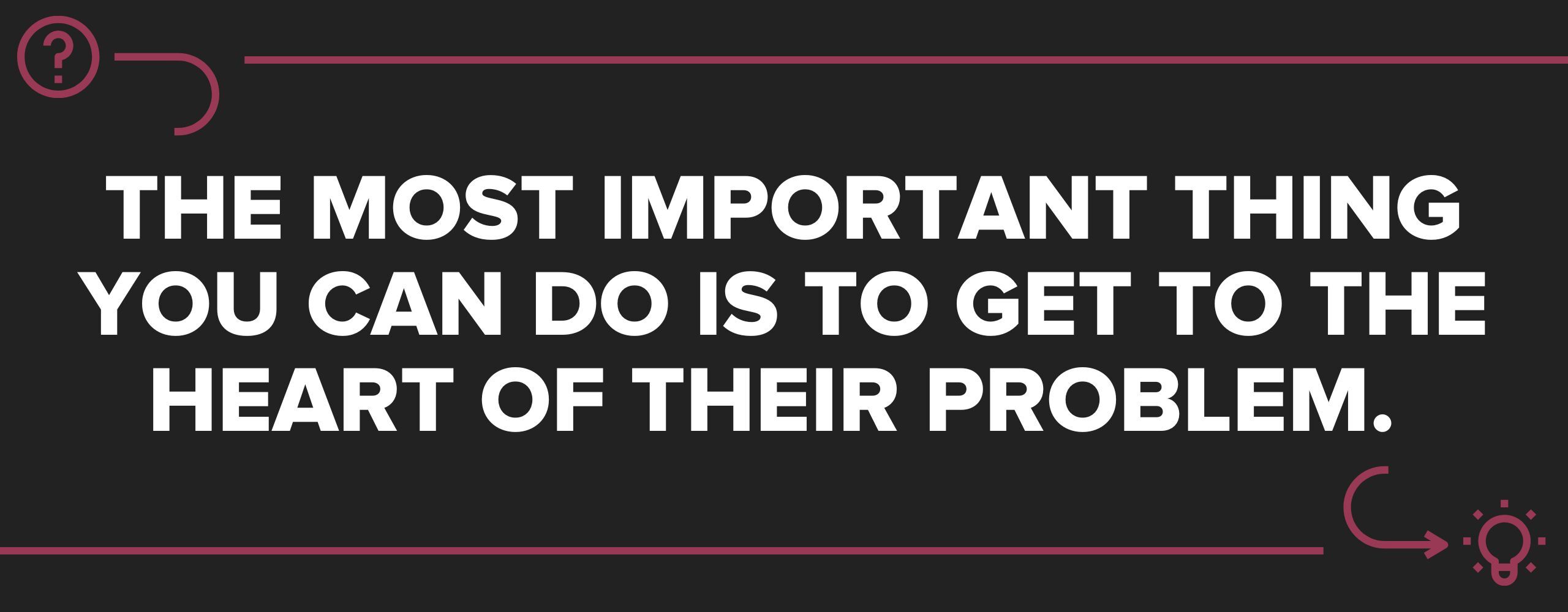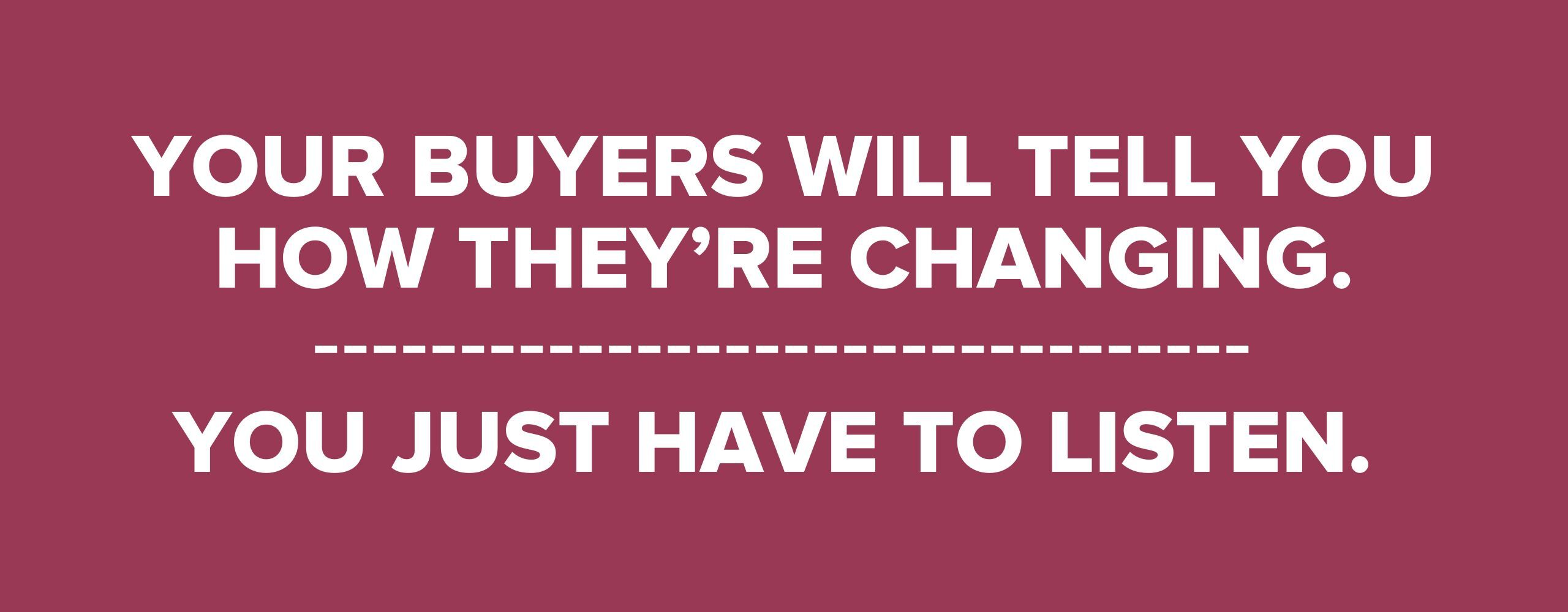Subscribe now and get the latest podcast releases delivered straight to your inbox.
If you’ve worked in sales for any length of time, you’ve had this experience: You’ve got a prospect you’ve almost persuaded to buy from you. Everything seems to be going great, until they suddenly pull back and change course. They’re no longer interested, they say.
And that’s that.
They exit your pipeline as a closed/lost deal, and you scratch your head.
“All signs pointed to a sale. What went wrong?”
But when you think about it, it’s actually pretty easy to understand. All of their desire for what you were selling was artificial. You’d created it for them. When you pitch that hard, when you convince and cajole — at some point the spell wears off and the buyer realizes he might not really want what you’ve told him he wants.
For so long, sales has been about persuasion — and I’m not saying persuasion should no longer be a tool you should use. I simply believe there’s a better way: Prompt your buyer to self-discover the nature of their problem — and the solution they need. This way, you can guide them to the outcome that best meets their needs. 
When salespeople cast themselves in the role of guide, instead of persuader, they end up with happier customers and more revenue.
But to do so, you have to reimagine your approach.
Which do you do more of, talking or listening?
A few years ago, Gong put out a study that looked at more than 25,000 B2B sales conversations. The findings were fascinating.
The biggest conclusion was this: Salespeople did way more talking than listening.
In any given meeting, sales reps spoke about 70% of the time on average. In other words, if a sales call were 100 minutes long, the sales rep would spend 70 minutes talking, presenting, showing slides, etc. The customer would only get what was left over: 30% of the talk time.
And this makes sense. All too often, sales reps cram their calls with a dozen slides that list feature after feature. This results in disengaged prospects who feel talked at instead of listened to.
But that’s not all the research found. Here’s where it gets interesting:
First off, most sales reps have NO IDEA that they talk this much. When asked to estimate how much they think they talked in meetings, most reps guess much lower.
Secondly, the researchers found that the most successful sales reps didn’t do the 70:30 ratio. In fact, it was almost the opposite. They only talked about 40% of the time, and they listened for 60%.
Let that sink in for a minute: The best sales reps listen more than they talk, while average sales reps talk more than they listen.
Which camp do you and your team fall into?
Listen to understand, not just for a hook
But not all listening is created equal.
What I’m talking about is not the glib, self-serving line of questions that every salesperson has in their back pocket.
You know what I mean, the questions that get asked just so the salesperson can find a way in:
Tell me about your company.
Tell me about your role.
Tell me about your competition.
These are not valuable for the buyer. They’re more like lines in a script that casts the prospect in the role of buyer — a role they’re not ready for.
They don’t prompt self-discovery.
A guide who listens
The biggest takeaway from the Gong research should be this: Salespeople should listen more — and listen better.
Salespeople should seek to guide the conversation with appropriate questions and follow-ups, and really listen to what the prospect has to say.
The most important thing you can do is to get to the heart of their problem. When you truly understand what a buyer is struggling with, you can understand the buyer’s needs.
But keep in mind, a prospect might not easily give this up. Heck, the prospect might not even be able to fully articulate the problem.
This is where your questions come in. Ask. Ask again. And keep asking. It often takes several questions to peel back the layers and get to what’s inside. 
Be patient. Don’t fall into the advice trap where you immediately step in to solve the problem — especially by shoving your product in their face.
Being a guide doesn’t mean you’re passive
But let me be clear: Being a guide doesn’t mean you’re passive. It doesn’t mean you’re a therapist or a best friend who’s just there to listen.
You’re still a salesperson.
Even though your focus is on listening instead of pitching, you still need to provide structure and pacing to the meeting.
How do you do that if you’re not the one doing most of the talking? I advise my clients to make sure they do four things:
- Set a clear agenda, but allow some wiggle room. At the start of the meeting — if not before — it’s up to you to lay out a clear plan for the meeting: What are you there to discuss, what are the expected outcomes, etc. Your framework will provide structure, but be sure to leave some space for exploration and the prospect’s self-discovery.
- Keep the train on the tracks. As the leader of the conversation, it’s up to you to stay on track. In most cases, some gentle correction or a well-placed question can bring the focus back if it’s starting to go in an unproductive direction.
- Ask purposeful questions. Ask questions so that you understand the buyer, but be sure to have a purpose for anything you ask. Don’t lose sight of your goal with fluffy or aimless questions.
- Set clear definitive next steps. At the end of the meeting, lay out clear next steps. Is it a follow-up meeting? Schedule it now. Is the prospect going to look something over with her boss and get back to you? Set clear expectations for the timeline.
Don’t end the call until it’s clear what’s going to happen next.
When you do these things, you’re able to be a guide, listener, and salesperson all at the same time. Instead of talking someone into buying from you even if it’s not exactly what they need, you’ll understand your customers better and match them with products or services that are a great fit.
At the same time, you’ll be prompting self-discovery. When a customer realizes something on her own, she’s much more likely to welcome that realization. If she can discover that her problem is really X, and that Y will help her solve it, she’s not going to suddenly bail out of your sales process.
Instead, she’s more likely to buy from you and become an ambassador for your brand.
That’s the way you build long-term dedication.
Listen to your customers
Meta/Facebook recently published a pretty alarming statistic: They found that 88% of executives and business leaders think their customers are changing too fast for their businesses to keep up. Any statistic like this should be taken with a grain of salt, but while we might debate the percentage, we can’t deny the sentiment.
Buyers are changing. Fast.
And companies can be slow to react.
If you’re a business leader in this boat — watching your buyers change faster than your company can — sales conversations are the front lines.
Your buyers will tell you how they’re changing. They’ll tell you what they like and don’t like about what you sell.
You just have to listen.


Order Your Copy of Marcus Sheridan's New Book — Endless Customers!

